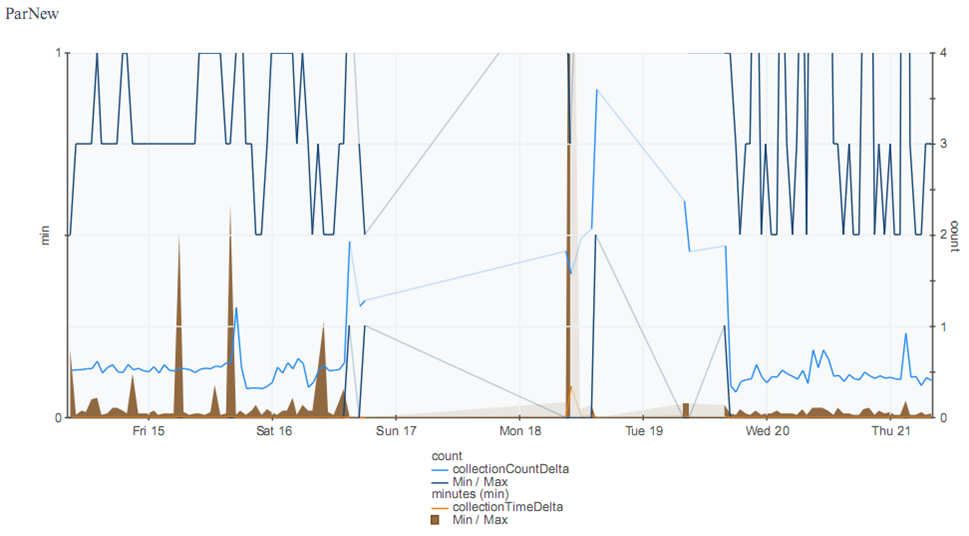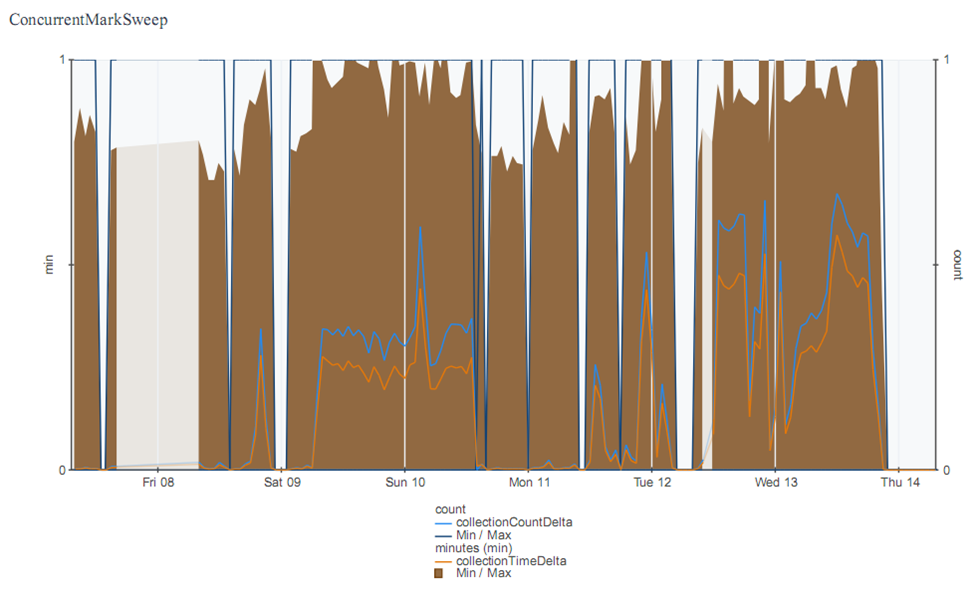JVM Memory Usage
The Support Bundle contains a Foglight® Management Server Performance Report (PerfReport.pdf). In the Performance Report, under the “Management Server Java Virtual Machine Memory” heading, there are a number of JVM memory charts.
A sudden drop in the Old Generation memory usage does not always indicate that a full GC has occurred, because the server now uses the parallel GC which runs in the background. Full GCs (during which the server slows down due to the garbage collection) are usually visible in the GC chart for ConcurrentMarkSweep, which is included in PerfReport.pdf. If the time or count lines rise above zero for a prolonged period, that indicates that the server is probably running out of memory. The GC becomes intense only when the sawtooth pattern hits 100%.
Permanent Generation is used for items like classes that are typically never collected.
To find the actual retention policy, open the Monitoring Policies XML file and search for lifecycle definitions.
Management Server Garbage Collectors
There are two types of garbage collectors:
|
1 |
ParNew—short and easy collections done in parallel, these have a low impact on the Foglight® Management Server in normal operation. |
|
2 |
ConcurrentMarkSweep—long and time-consuming collections that cause the JVM to pause everything else. The Management Server can appear to “freeze” during these cycles. |
Examine the graphs for indications of issues.
The graph above indicates problems with the ParNew GC. The count (blue line) is up to 4, and the time (orange and brown) has increased to minutes.
The graph above indicates problems with the ConcurrentMarkSweep GC. The time (brown) has increased to minutes and the GC is called frequently.
These two graphs indicate the following issues:
|
Proper analysis of heap usage is necessary to ensure the root cause is resolved. |
JDBC Connection Pool
Keep this in mind while investigating other issues.
Derivation Rulette
A derivation rulette is an instance of a derived metric definition that is tied to a particular Topology Object. Derivation rulettes take memory to store. Depending on the Foglight® Management Server version, anywhere from 4k (Management Server versions earlier than 5.5.5) to 1.5k (versions 5.5.5 and later). The more derivation rulettes you have, the more JVM heap is locked and cannot be freed, which leads to JVM heap exhaustion and performance problems.
Examine the count to determine whether there is an issue.
Examine the diagnostic snapshot to determine the source of the problematic rulettes.







